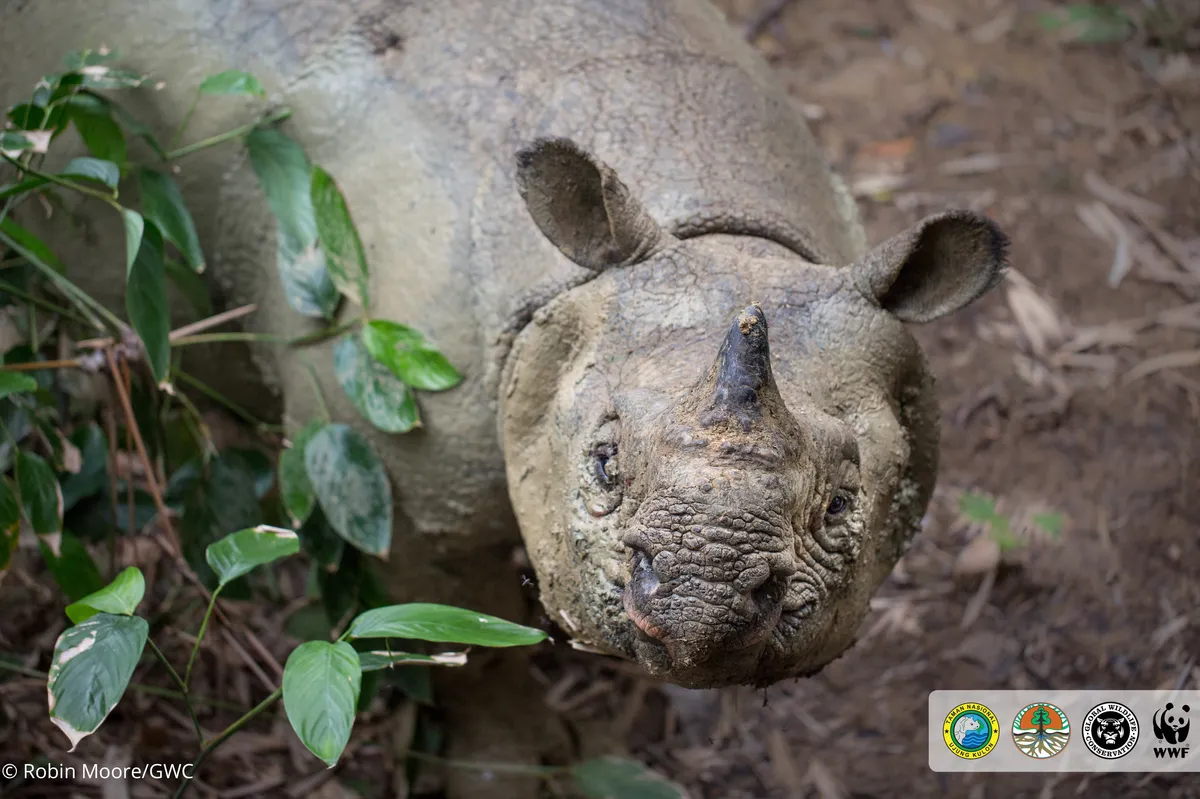In the thick forests of Indonesia, lives a rare and solitary mammal – the Javan rhino. Its global population stands at just 68 individuals, all confined to the Ujung Kulon National Park in West Java, and it is very difficult to see one in the wild.
Therefore, when conservationists from WWF-Indonesia and Global Wildlife Conservation visited the park and came across a wallowing rhino, they knew they were seeing something special.
Watch the footage:
“It was a surreal, once in a lifetime moment, like time had stopped, and it was all we could do not to scare the animal away in our excitement,” says Robin Moore, the photographer and team member from Global Wildlife Conservation.
“By sharing these photos, we hope to give people an emotional connection to this rare species – an animal that even rhino biologists only dream of getting a glimpse of in the wild.”
Moore took the photos and video with permission from the park’s officials, and it is thought that these could potentially be the first-ever that show the species wallowing.

The Javan rhino is listed as Critically Endangered on the IUCN Red List. It was once found across Asia in parts of Bangladesh, Bhutan, Cambodia, Southern China, Indonesia, Laos, Myanmar, Thailand and Vietnam, but is now only found in the Ujung Kulon National Park in Indonesia.
The species was once considered to be an agricultural pest, due to its fondness for grazing on rice fields, and has been targeted in the past for its horn.
The rhino lives in thick forests and are solitary animals, making them much more difficult to find in the wild.
Global Wildlife Conservation and WWF-Indonesia are working with the park and the Indonesian Rhino Foundation to conserve the last of this rhino species.
Efforts have included installing 120 camera traps to closely observe the rhinos, as well as future conservation work to enhance the protection of those remaining, and their habitat.
In addition, rhino protection units have been established to patrol the park and prevent poaching.

“The Javan rhino is the pride of Indonesia, so we should protect it from extinction,” says Rahmat U Mamat, head of Ujung Kulon National Park. “We give thanks to the community surrounding the park in helping us to protect it.”
Future conservation plans involve relocating some of the rhinos – in the hope of expanding the population in other parts of Indonesia – and controlling the invasive Arenga palm, which inhibits the growth of the plants eaten by rhinos.
“Collaborative conservation efforts have resulted in rising Javan rhino numbers, underscoring the need to work together for common conservation goals,” says Margaret Kinnaird, leader of WWF’s Wildlife Practice.
“Javan rhinos are still far from secure and require continued efforts by the Indonesian government and its partners.”